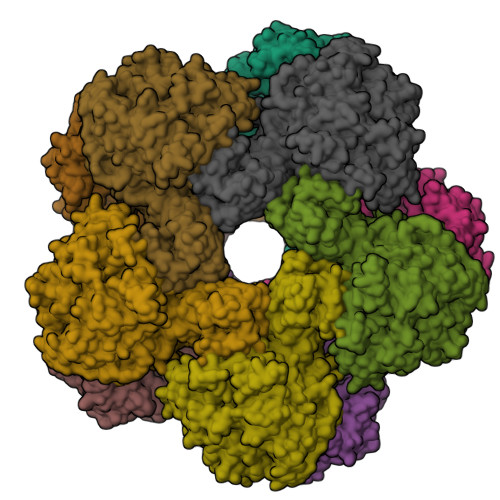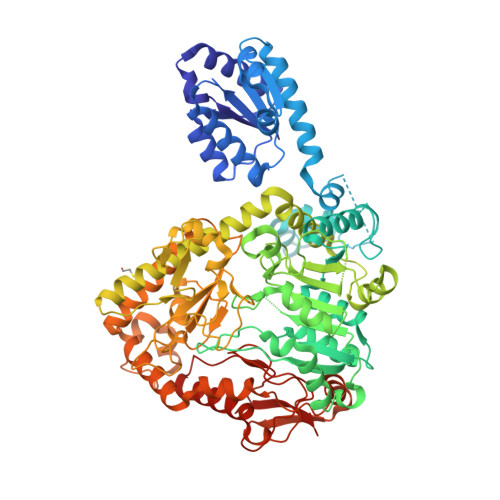Structural studies on the decameric S. typhimurium arginine decarboxylase (ADC): Pyridoxal 5'-phosphate binding induces conformational changes
Deka, G., Bharath, S.R., Savithri, H.S., Murthy, M.R.N.(2017) Biochem Biophys Res Commun 490: 1362-1368
- PubMed: 28694189
- DOI: https://doi.org/10.1016/j.bbrc.2017.07.032
- Primary Citation of Related Structures:
5XX1, 6AA9 - PubMed Abstract:
Enteric pathogens such as Salmonella typhimurium colonize the human gut in spite of the lethal acidic pH environment (pH < 2.5) due to the activation of inducible acid tolerance response (ATR) systems. The pyridoxal 5'-phosphate (PLP)-dependent enzyme, biodegradative arginine decarboxylase (ADC, encoded by AdiA), is a component of an ATR system. The enzyme consumes a cytoplasmic proton in the process of arginine degradation to agmatine. Arginine-agmatine antiporter (AdiC) exchanges the product agmatine for arginine. In this manuscript, we describe the structure of Salmonella typhimurium ADC (StADC). The decameric structure assembled from five dimers related by a non crystallographic 5-fold symmetry represents the first apo-form of the enzyme. The structure suggests that PLP-binding is not a prerequisite for oligomerization. Comparison with E. coli ADC reveals that PLP-binding is accompanied by the movement and ordering of two loops (residues 150-159 and 191-197) and a few active site residues such as His256 and Lys257. A number of residues important for substrate binding are disordered in the apo-StADC structure indicating that PLP binding is important for substrate binding. Unlike the interactions between 5-fold related protomers, interactions that stabilize the dimeric structure are not pH dependent.
Organizational Affiliation:
Molecular Biophysics Unit, Indian Institute of Science, Bangalore 560012, India.


















